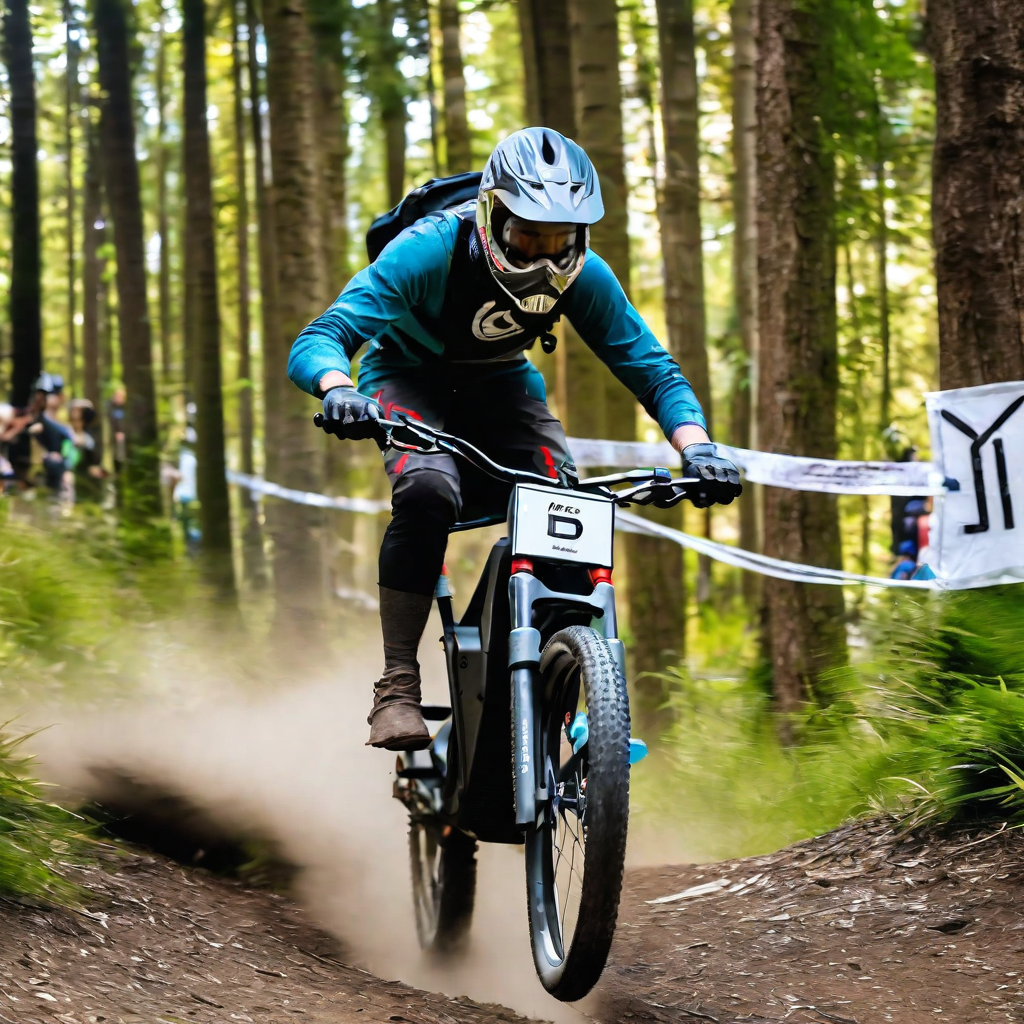Downhill Hill: Breaking Down Components of Top Electric DH Bikes
| Key Takeaways |
|---|
|
To thrive riding steep, demanding trails, electric downhill mountain bikes boast burly component specs and frame designs expressly optimized for the unique forces involved.
Beefed up suspension, powerful brakes, stout wheels and tires, and frames accommodating beefy batteries separate casual trail eMTBs from full-on downhill race weapons.
We’ll provide an in-depth look at the specialized components that make modern electric downhill bikes capable of shredding black diamond runs at breakneck speeds.
Frame Design and Geometry
Downhill eMTB frames diverge from cross country bikes with:
- Beefier rear triangles – Burlier chain and seat stays handle the torque forces from powerful mid-drive motors and absorb big hucks and jumps.
- Slacker head tube – A slacker angle around 63-65° quickens steering and prevents front end washout on steeps.
- Lower bottom bracket – Dropping BB height increases cornering lean angles possible before pedal strikes.
- Aggressive top tube length – Longer reach combined with stubby stem lengths boost high speed stability.
- Integrated mounts – Stealthy built-in motor, shock, and accessory mounts preserve clean DH aesthetics.
Suspension Components
Downhill bikes require highly capable suspension:
- 180-200mm travel forks – Extra stanchion overlap allows bigger fork travel for absorbing huge hits while retaining stiffness.
- 65-75mm of rear travel – Big air shocks with 75mm+ stroke turn landings into smooth compressions.
- Downhill damping – Separate high and low speed compression adjust permit tuning big hit control and small bump compliance.
- Progressive leverage curve – Rising rate suspension designs prevent harsh bottom out during successive hits.
- Adjustable geometry – Angle adjusting headsets and adjustable rear links let riders fine tune bike geometry.
Power System
Electric assist tackles climbs between downhill runs:
- Integrated downtube batteries – Sleek internal battery fits cleanly into hardcore DH frame design. 500-750Wh capacity enables all-day lift assisted riding.
- Potent mid-drive motors – Compact yet powerful motors from Bosch, Shimano and Brose supply up to 85Nm of torque for rapid acceleration.
- Removable options – Some bikes use easily removable batteries to shed weight for pure descent-focused laps.
Drivetrain and Brakes
These heavy-duty components withstand pounding downhill forces:
- 10-51t cassettes – Huge 10t cogs provide lower gears for climbing steep shuttle roads between descents.
- 30-34t chainrings – Smaller rings optimize torque on technical uphill sections.
- Tough cranks – Strong downhill specific alloy or carbon crank arms resist bending under mid-drive forces.
- 220-250mm rotors – Oversized rotors increase heat dissipation for sustained braking.
- Multi-piston calipers – 4-piston and higher calipers bite rotors with more power than trail bike 2-piston units.
- Sintered pads – Metallic compounds withstand extreme heat buildup on successive steep descents.
Wheels and Tires
Wheels and rubber get an extra strength DH makeover:
- 30-35mm inner width rims – Wider rims support the sidewalls of heavy duty tires at low inflation.
- Double down rear spokes – Additional spoke crosses and a disc-side drive side flange make rear wheel builds ultra stiff.
- Steel freehub body – Steel freehub material withstands cassettes digging in under heavy mid-drive torque. Some opt for titanium for ultimate strength.
- 2.5-3.0” downhill tires – Meaty tires provide higher volume for cornering traction and enhanced sidewall resilience. Sticky DH tread combats loose conditions.
Conclusion
Electric downhill bikes live for charging black diamond speed and jump trails all day. That necessitates frames, suspension, motors, and components purpose built to withstand the repeated abuse of riding on the edge at mach speed. Sharpen your skills and outfitted with a proper downhill weapon, you can conquer the steepest gnar with grins.
eDH Bike FAQs
How much travel should an eDH bike have?
Around 180mm up front and 165-200mm out back allows absorbing the biggest hits. But some prefer less for better all around agility.
Do eDH bikes use air or coil shocks?
Either can work well. Air springs simplify tuning, but coils offer very linear spring curves that excel managing repeated hits.
What motors are best for shuttling?
Compact yet powerful mid-drives like the Bosch Performance CX or Shimano EP8 allow tossing the bike around more freely than hub drive eMTBs.
Should I go Mullet with a 27.5 rear?
For stability at speed, a 29er front matched to a 27.5 rear wheel helps eDH bikes stay nimble when pointed straight down the fall line.
How frequently should eDH bikes require suspension service?
The extreme forces mean tearing down to replace wipers and lubricate internals as often as every 15-20 hours of use.

